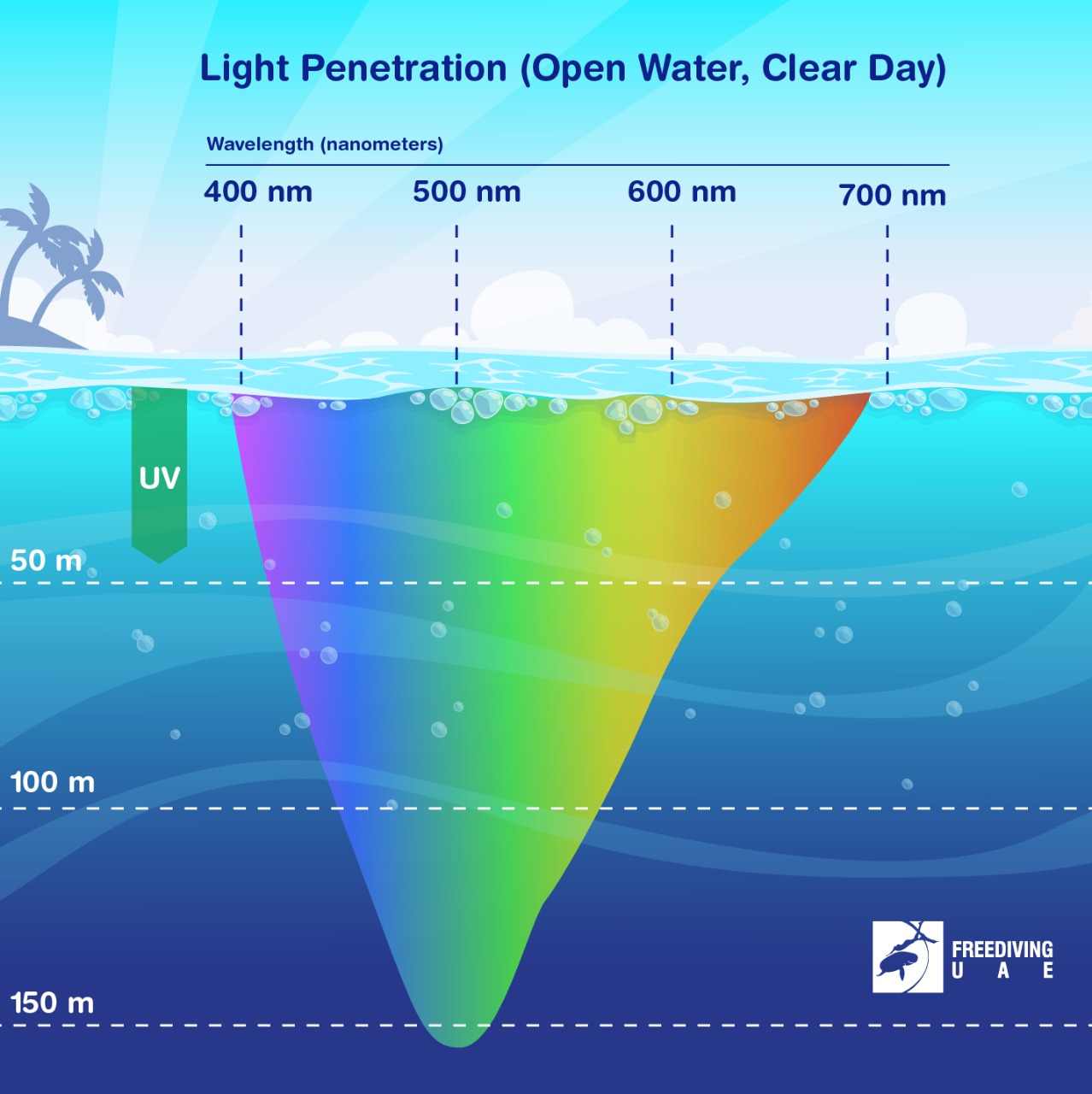What Happens to Light at Depth?
Nobody will argue the fact that underwater world is extremely diverse and beautiful. However, if you try to film its beauty, you will encounter some problems. The deeper you go the darker it becomes. But what does it mean exactly?
There are many factors which influence the light that penetrates the water: time of day, season, location, clarity of water. They all change the amount of light that passes through water. It is absorbed and scattered by water molecules and particles in it.
But it does not just get darker the deeper you go. The underwater world quickly becomes blue. The biggest problem you might encounter is the absorption of colour wavelength. The first one to be scattered is red. At about 10 meters below the surface, most of red and orange wavelengths of visible light are no longer present. By about 150 meters depth, our eyes can only catch blue.
That is why we need to use artificial light or color correcting filters for cameras to film underwater. To put it very simple, they help to reduce the amount of blue light (and green, indigo, violet) so that it is more equal to the amount of available red light (and orange and yellow). Camera will have less light to use for focusing and less light for exposure. It is recommended to use them for daylight dives and in shallow waters.
At about 800 meters down the deep the human eye can no longer detect any light from the surface. The only natural source of light at such depth is light produced by living organisms – which, at that depth, become quite common.


